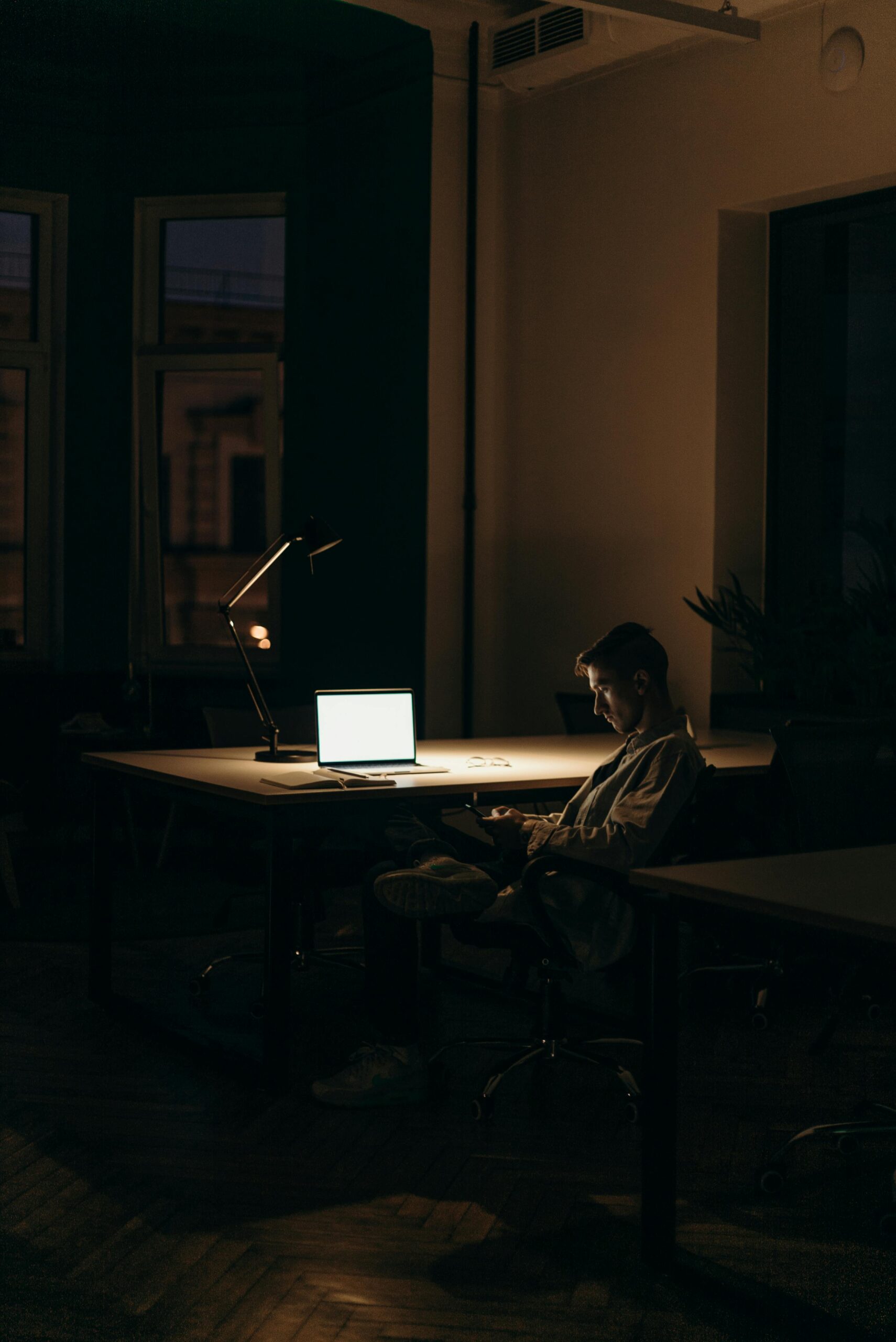Working remotely has become the new normal for millions, but the psychological challenges can be surprisingly intense. Did you know that 65% of remote workers report feeling more isolated than when working in an office environment? I’ve been there too! The boundaries between work and personal life blur, digital exhaustion creeps in, and suddenly, that “dream setup” starts feeling like a mental treadmill you can’t escape. But here’s the good news – resilience isn’t something you’re born with; it’s something you build through intentional daily habits. In this comprehensive guide, I’ll share the science-backed daily practices that have transformed my own remote work experience and helped countless others develop an unshakeable foundation of mental fortitude. Whether you’re a seasoned remote worker or just getting started, these habits will help you not just survive but truly build resilience while working remotely
1) Morning Habits Build Remote Work Resilience
Do you ever roll out of bed and log straight into your morning meeting just 10 minutes later? I’ve definitely been guilty of it. But if you’re like me, those kinds of mornings usually feel rushed, unproductive, and low on energy.
How you start your day determines how the rest of it will go. Studies show that 57% of Americans hit the snooze button when their alarms go off—and it’s costing them more than just a few extra minutes of sleep.
Think about it:
-Start your day tired? You’ll likely stay tired.
-Start your day stressed or irritable? Expect a day full of tension.
But start your day rested and intentional? You’re setting yourself up for resilience, productivity, and well-being.
Just the other day, I skipped my usual late-night documentary binge on YouTube and went to bed early instead. The result? I woke up refreshed, crossed 90% of my to-do list off before lunch, and even had the motivation to hit a solid workout after work.
Building remote work resilience starts with your morning. It’s that simple.
While I’ll cover healthy sleep routines and morning rituals in a dedicated post, here’s a quick starter checklist for remote workers:
a) Wake up 30 minutes to 1 hour before your shift starts
b) Hydrate immediately—water kickstarts your metabolism
c) Take 5–10 minutes for mindfulness: meditation, journaling, or affirmations
d) Eat a nutritious breakfast to fuel your focus
e) Use any extra time to do something that brings you joy or peace
These small habits compound. And they’re the difference between dragging through the day—and crushing it with unshakeable resilience.
Let me know if you’d like me to optimize the next section or turn this into an HTML blog post!
2) Creating Physical Spaces That Foster Resilience
When working from home, your physical environment can either build your resilience—or silently drain it. Most people underestimate just how much their workspace setup affects their mindset, energy levels, and focus throughout the day.
Let me break down some key ways you can create a home office that actually build resilience in your remote work journey, especially as a remote worker in 2025.
a) Design a Dedicated Workspace That Signals “Work Time” to Your Brain. For years, I worked from the couch, kitchen table, and even my bed. And unsurprisingly, my productivity and focus suffered. My brain couldn’t separate work time from rest time, so I was always in a blurry mental state—half-on, half-off.
It wasn’t until I set up a small, dedicated desk in the corner of my room with a simple chair, monitor, and lamp that things shifted. Now, the moment I sit there, my brain knows: it’s time to work.
🧠 Pro Tip: Your brain thrives on environmental cues. Create a consistent workspace—no matter how small—and reserve it only for work. Over time, it becomes a mental trigger for focus.
b) Incorporate Natural Elements for a Psychological Boost There’s something about natural light, plants, and fresh air that helps you feel grounded and refreshed—even during stressful workdays.
When I moved my desk next to a window and added a few low-maintenance plants like snake plants and pothos, my energy noticeably improved. Research even supports this: exposure to natural elements can reduce stress and enhance cognitive function—two crucial components of remote work resilience.
🌿 Quick Wins:
- Place your desk near a window if possible
- Add greenery (real or even high-quality artificial plants)
- Use natural wood textures or calming earthy colors in your decor
c) Reduce Visual Clutter to Lighten Your Mental Load. Let me confess something—when my desk is messy, so is my mind. I used to leave notebooks, mail, chargers, and snacks scattered across my workspace. And by midday, my brain felt overwhelmed… before I even opened my inbox.
The truth is, visual clutter contributes to cognitive overload. The more distractions in your field of vision, the harder it is to stay focused and resilient under pressure.
I now end every day with a 5-minute “reset”—clearing my desk, tossing trash, and putting everything in its place. It’s a small ritual that pays big dividends the next morning.
🗂 Organization Tips:
- Use trays or bins to keep items grouped
- Go paperless where possible
- Keep only essentials on your desk: laptop, notepad, water bottle
Your environment is more than a backdrop—it’s a key player in your success as a remote professional. By building a space that signals work, embraces nature, and minimizes clutter, you’ll build daily resilience that’s hard to shake.
You don’t need a Pinterest-worthy office—just a few intentional tweaks that support your mind, body, and workflow.
3) Physical Well-being Habits Essential for Mental Resilience
When working from home, it’s easy to become a “high-functioning statue”—chained to a desk, barely moving, sipping cold coffee instead of water, and wondering why your energy crashes by 2 PM. I’ve lived that life more times than I’d like to admit.
But here’s the truth: physical well-being is the foundation of mental resilience. If you want to build resilience in remote work in 2025 and beyond, you can’t ignore the body that carries your brain to those back-to-back Zoom calls.
Here are three powerful habits I’ve integrated into my remote routine—and they’ve made a world of difference.
a) Movement Breaks That Counteract the Effects of Sedentary Work: At one point, I was sitting for 10–12 hours straight every day. Sure, I was getting work done, but my lower back hurt, my legs were stiff, and mentally—I was drained. That’s when I started implementing scheduled movement breaks, and everything changed.
Experts recommend every 55 minutes to stand up, stretch, or take a quick 5-minute walk around. It’s not about burning calories—it’s about restarting your brain and breaking the sedentary cycle.
🏃 Science-backed tip: Short, frequent movement breaks boost circulation, reduce fatigue, and enhance focus. Even just standing up and moving your arms gets the blood flowing and recharges your mental battery.
b) Hydration Scheduling to Maintain Optimal Cognitive Function: I used to forget to drink water until I had a headache or felt sluggish mid-afternoon. It turns out, even mild dehydration can impair memory, concentration, and mood—all enemies of resilience.
What helped me? Hydration scheduling. I now drink a full glass of water first thing in the morning, and then use time blocks to remind myself to refill my bottle every 2–3 hours…..or perhaps when you go on that 5-minute walk around.
💧 Try this: Start your day with 16 oz of water. Keep a bottle within arm’s reach while you work. Set calendar reminders if needed. Your brain (which is 75% water) will thank you.
c) Posture Reset Practices Throughout the Workday: One day I caught a glimpse of myself in the webcam—and I was hunched like Gollum. My shoulders hurt, my neck was tight, and my posture was wrecking my confidence and energy.
Now, I make it a point to reset my posture at least 3 times a day. I do a few shoulder rolls, sit tall with feet flat on the floor, and do some quick stretches between tasks.
🪑 Simple posture reset:
- Pull your shoulders back and down
- Engage your core lightly
- Stack your ears over your shoulders
- Adjust your monitor to eye level
Good posture isn’t just about avoiding back pain—it boosts oxygen flow, alertness, and even mood, making you more resilient to mental fatigue and stress.
Don’t let remote work turn you into a sedentary, dehydrated, hunched-over burnout case. Your physical habits directly fuel your mental sharpness and emotional resilience.
Overwhelming list, right? To build resilience remote work isn’t about implementing all habits at once—it’s about choosing the ones that address your specific challenges and gradually incorporating them into your daily life. The beauty of these practices is that they compound over time; each small action strengthens your psychological foundation until you find yourself naturally bouncing back from the inevitable challenges of remote work. Remember that resilience isn’t the absence of struggle but rather the ability to adapt and grow through it. As we navigate the evolving landscape of remote work in 2025, these habits provide not just a survival strategy but a pathway to genuine fulfillment and success in your home office. What habit will you start with today? Your future resilient self is waiting on the other side of that decision!





Leave a Reply